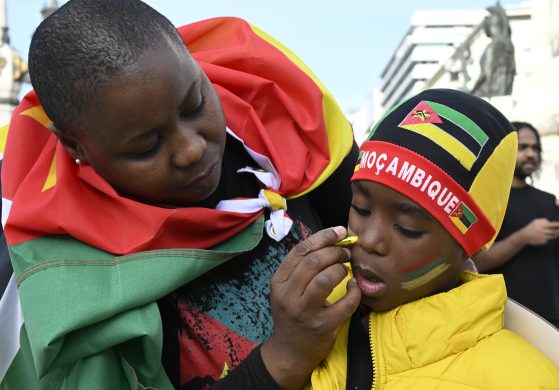Voldsbølgen, som især har ramt det nordlige Nigeria, har fået tusinder til at flygte til nabolandet Cameroun – et land som i forvejen er vært for en stor flygtningebefolkning fra den kaotiske og blodbesudlede Centralafrikanske Republik.
YAOUNDE, 11 July 2014 (WFP): As violence in northeastern Nigeria causes massive displacement, thousands of families have fled across the border into Cameroon where the UN World Food Programme (WFP) is providing humanitarian assistance despite insecurity and logistical challenges.
It is the first time that WFP has operated in locations so close to the border with Nigeria, where the security situation is volatile, writes the UN Programme in a press release Friday.
Leaving behind burned homes and often running for their lives, close to 8,000 Nigerians have fled since May into the remote northernmost region of Cameroon from the northern Nigerian states of Adamawa, Yobe and Borno, from where 200 Nigerian school girls were kidnapped in April.
Mandag er det tre måneder siden kidnapningen – se også http://www.dr.dk/Nyheder/Udland/2014/07/11/211215.htm
Local communities have provided food and shelter to the refugees, but food stocks are running low and many newcomers are already undernourished.
“Local communities have helped as much as they can but these refugees are in dire need of food and other assistance. We have found worrying levels of malnutrition, especially among children. Addressing this is a priority for WFP and our humanitarian partners,” said Jacques Roy, WFP’s representative in Cameroon.
WFP began providing assistance to this new wave of Nigerian refugees in June, reaching nearly 7,500 in a first round of food distributions.
Mange børn er underernærede
A nutrition assessment at the end of June found alarming levels of malnutrition among newly-arrived children.
In one village in the Waza district, acute malnutrition rates were as high as 25 percent, well above the 15 percent emergency threshold.
WFP has also provided local health clinics with new stocks of special nutritional products to help curb malnutrition and is planning to distribute these foods also to all children under five and to all pregnant and nursing mothers among the refugees to prevent malnutrition.
Even before the latest influx, Cameroon was already hosting refugees from Nigeria in the main Minawao camp and in communities.
According to the UN refugee agency, UNHCR, some 650,000 people have been displaced in Adamawa, Yobe and Borno, where attacks by armed groups are happening most frequently and where the greatest numbers of people are fleeing their homes.
Amid fears that more families may flow into Cameroon, WFP and its humanitarian partners in Cameroon are planning for an operation to assist as many as 50,000 by the end of the year.
Oveni kommer tragedien i Centralafrika (CAR)
At the same time, humanitarian organizations in Cameroon are dealing with a significant refugee emergency in the East.
Conflict in the Central African Republic (CAR) has driven 107,000 people into Cameroon’s eastern regions.
The number is expected to reach 180,000 by the end of the year.
The extremely poor CAR has been plagued by inter-communal fighting and widespread bloodsheed along religious lines.
Most of the refugees are Muslims, driven out of their country from fear of reprisals by Christian militias – which in turn are avenging former Muslim reprisals, done by Seleka-militias.














